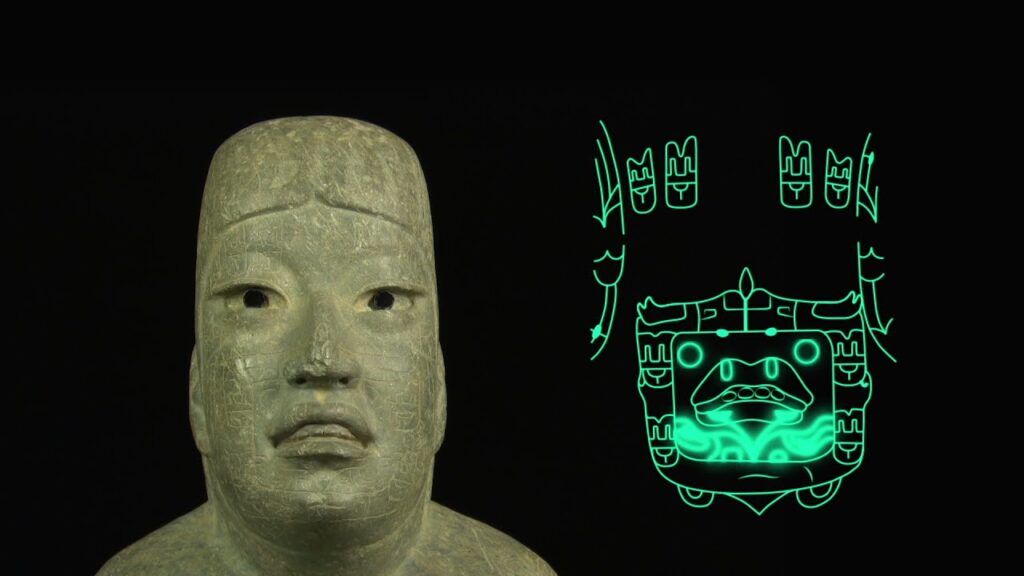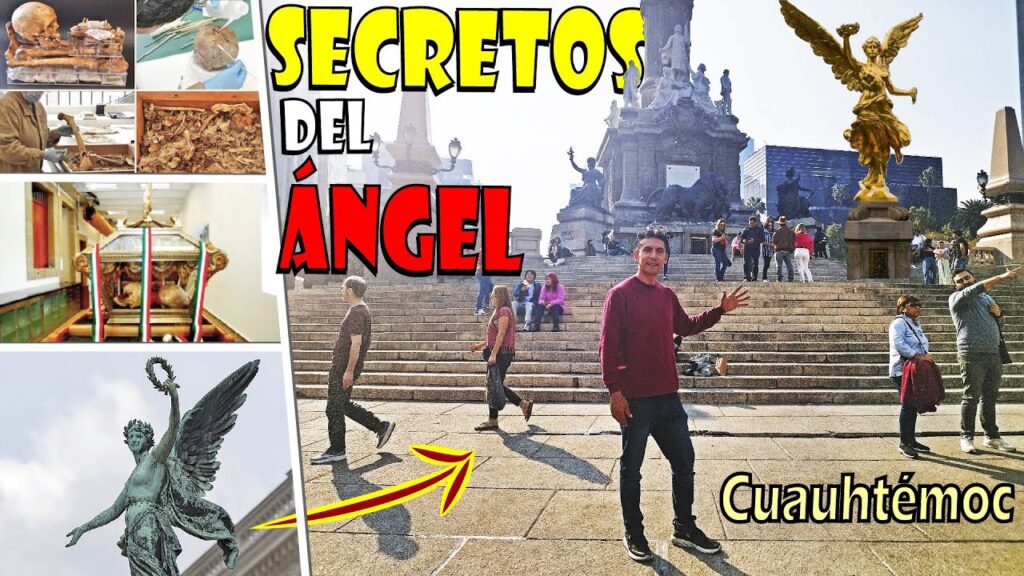The Mysterious Journey of the Olmec “Señor de las Limas” Statue
The Olmec civilization, known as one of Mesoamerica’s earliest societies, has left behind many mysteries that continue to intrigue historians and adventure seekers alike. Among the remarkable artefacts attributed to their culture is the “Señor de las Limas” statue, a significant archaeological find that has captivated the attention of enthusiasts around the world. This enigmatic sculpture, discovered in the town of Las Limas in Veracruz, represents a seated figure with a were-jaguar infant cradled in its arms, a motif emblematic of the Olmec’s complex mythology and reverence for nature and shamanism.
Unearthed by local farmers in the 1960s, the journey of the “Señor de las Limas” statue from its resting place in the earth to the National Museum of Anthropology in Mexico City is nothing short of extraordinary. Smuggled, sold, recovered, and finally handed over to governmental authorities, the statue’s odyssey reflects not only its immense cultural value but also the turbulent path many pre-Columbian artefacts face, caught between local traditions, illegal trade, and national heritage preservation. Throughout its travels, the statue has emerged not only as a subject of scholarly study but as a symbol of Mexican ancestral knowledge and artistry.
Today, the “Señor de las Limas” statue continues to be a source of mystery and fascination. Researchers delve into its origins and the story it tells about the Olmec people, while tourists and adventure enthusiasts seek out the places associated with this artefact’s discovery and history. The statue’s journey stands as a testament to the rich and enigmatic history of the Olmec, stirring the imagination of those who wish to explore the roots of civilization in the Americas and the voyage of incredible artefacts through time.
Unveiling the History: How the Señor de las Limas Was Found in a US Motel Room
The Señor de las Limas is one of Mexico’s most enigmatic archaeological treasures, a vestige of the Olmec civilization that has mystified historians for decades. Its discovery wasn’t within the sprawling ruins of an ancient city or deep within a jungle-covered temple, but rather in the unlikely confines of a nondescript motel room in the United States. This remarkable story begins in the 1960s, when the Señor de las Limas was first unearthed from a site in Veracruz, Mexico. It represents a striking figure, a youth holding a were-jaguar infant, and symbolizes the complex and advanced culture of the Olmec people—thought to be the “mother culture” of Mesoamerica.
In the world of antiquities, the line between legal and illegal trade is often blurred, and the journey of the Señor de las Limas from its homeland to an American motel room is a testament to this murky world. After its discovery, the precious artifact was illicitly smuggled out of Mexico. It’s believed that looters, realizing the statue’s value, took advantage of lax regulations and porous borders to transport it out of the country. Despite international laws designed to protect cultural heritage, the Señor de las Limas became one of countless antiquities caught in the controversial global trade.
The story takes a dramatic turn when, in one of history’s quirks, the statue resurfaced in a police raid during the 1970s. Astounded law enforcement officers stumbled upon the artifact, not among a treasure trove of other artifacts but amidst the mundane surroundings of a US motel room. It was being kept by an artifact collector, who likely had no idea about the historical significance or the legal ramifications of possessing such an item. The recovery of the Señor de las Limas raised critical discussions about the fate of cultural objects removed from their countries of origin.
Following its unexpected recovery, the Señor de las Limas became the subject of a contentious repatriation debate. Mexican authorities demanded its return, citing the 1970 UNESCO Convention that calls for the restitution of cultural property to its country of origin in cases of illicit trafficking. This case highlighted international cooperation’s role and the often-complex legal and ethical debates surrounding the repatriation of cultural artifacts. The importance of preserving cultural heritage became a rallying cry for those fighting to bring the Señor de las Limas back to Mexico.
After prolonged negotiations and a legal battle that drew the attention of the global community, the US government eventually agreed to return the Señor de las Limas to Mexico. Its repatriation was not merely a law enforcement victory but a cultural triumph. It serves as a potent reminder of each nation’s responsibility to safeguard and respect humanity’s shared heritage. As it stands on display in Mexico today, the Señor de las Limas continues to be an emblem of national pride and a beacon of hope for the return of other lost artifacts to their rightful homes.
Cultural Significance and The International Odyssey of the Señor de las Limas Sculpture
The Señor de las Limas Sculpture is one of the most intriguing artifacts of pre-Columbian Olmec civilization, marking a vestige of cultural sophistication that still mystifies historians today. Discovered in 1965 by two brothers in the village of Las Limas, Veracruz, this sculpture has become an emblem of Olmec art. The statue depicts a seated figure holding a were-jaguar baby, a motif indicating the Olmecs’ religious beliefs and their reverence for jaguars, creatures they associated with power and the underworld. The importance of this sculpture lies not only in its artistic merit but also in the light it sheds on the complex social structure and religious practices of one of the most influential early Mesoamerican societies.
Following its discovery, the Señor de las Limas Sculpture embarked on an international odyssey that sparked both wonder and controversy. Initially smuggled out of Mexico, it passed through the hands of various private collectors before cultural heritage advocates succeeded in repatriating it to its home country. The sculpture’s journey raised awareness about the illicit antiquities trade and stressed the need for greater international cooperation to protect and preserve the world’s cultural patrimony. Its repatriation stands as a landmark case in the ongoing fight against the illegal looting of archaeological sites, symbolizing Mexico’s resolve to reclaim its cultural treasures.
Today, the Señor de las Limas Sculpture is not merely an object of beauty but a source of national pride and a reminder of the cultural richness of the region. The sculpture has been prominently displayed in Mexico’s premier institutions, such as the National Museum of Anthropology in Mexico City, allowing millions of visitors to appreciate the craftsmanship of the Olmec people. Its presence in Mexico serves as an educational tool and an inspiration for both locals and travelers, revealing the stories and mystique of a civilization that laid the foundations for subsequent cultures in Mesoamerica.
Preserving Heritage: The Legal Battle Over the Señor de las Limas After Its Unexpected Discovery
The Señor de las Limas artifact, an exquisite representation of the Olmec civilization’s sculptural artistry, came to light under unusual circumstances. Found by chance in the Mexican state of Veracruz, the sculpture sparked immediate excitement among archaeologists and historians. This ancient figure, which depicts a seated Olmec ruler adorned with a jaguar headdress, holds great cultural and historical significance, symbolizing the intricate and sophisticated craftsmanship of its creators.
However, the artifact’s discovery soon resulted in a complex legal tug-of-war. As a nation proud of its rich heritage, Mexico has stringent laws designed to protect pre-Columbian artifacts and the integrity of its historical sites. In this high-stakes debate over ownership and cultural patrimony, the line between national pride and individual finds becomes blurred, challenging established protocols on artifact recovery and preservation.
Questions of legality arose when the finders of the Señor de las Limas sculpture, initially unaware of its significance, were swept up in legal proceedings. Mexico’s federal laws dictate that such artifacts are the property of the nation, and removing them from their historical context without permission constitutes a severe offense. The authorities’ prompt intervention underlined the gravity of the situation, igniting discussions about the protection of cultural property and the consequences of unauthorized excavation.
This saga is further complicated by the international intrigue surrounding the trade in pre-Columbian art. The high demand for Mesoamerican artifacts in the global market creates an undercurrent of illegal trade and looting, exacerbating the legal and ethical challenges faced by governments and cultural institutions. The case of the Señor de las Limas stands as a poignant reminder of the fine line between national heritage and commercial exploitation.
In attempts to ensure the long-term preservation and responsible custodianship of the Señor de las Limas, robust discussions continue between governmental agencies, legal experts, and international bodies. Striking a balance between accessibility to the public for educational and cultural enrichment and safeguarding against illicit trade remains at the heart of this ongoing debate. As each party vies for its view on the rightful place and management of the artifact, the Señor de las Limas remains a touchstone for broader conversations about the stewardship of humanity’s collective history.



